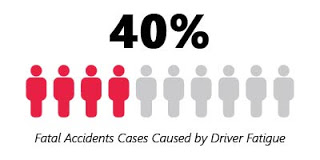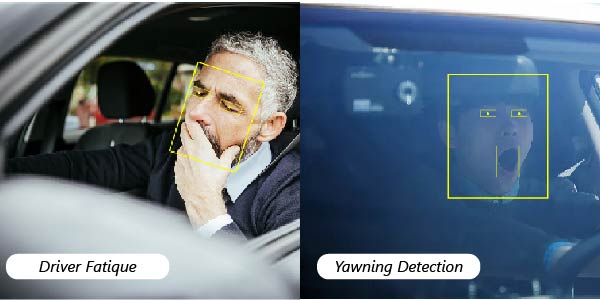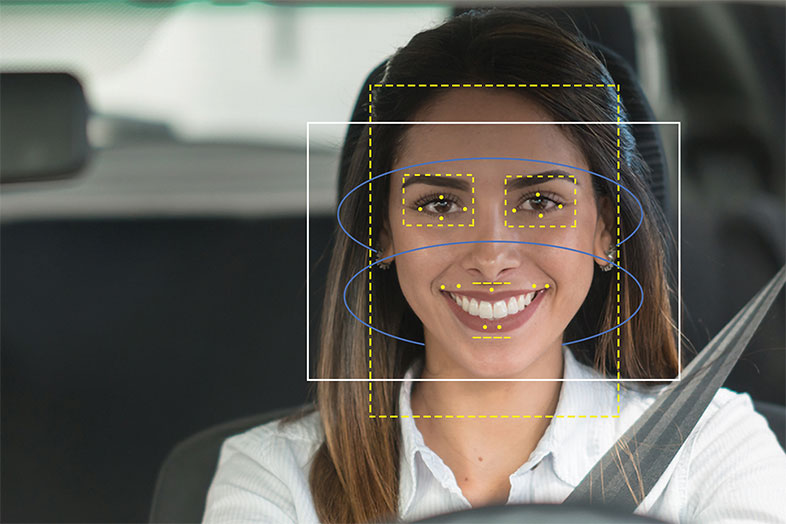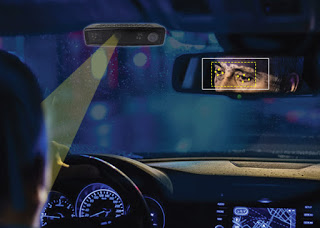Hours-of-Service has been Expanded due to the Pandemic, How to Deal with Driver Fatigue?

Driving hours have been extended by about 20% to meet the increased supply chain demands brought about by the Covid pandemic.
We must be extra vigilant now to prevent more fatal accidents from being tired at the wheel. So how big of a problem is driver fatigue?
Fatigue contributes to 10-20% of road crashes and 4% of fatal crashes are caused by tiredness – and most of these, four in ten cases involve someone driving a commercial vehicle.
Who should be most careful with tiredness?

Four in ten cases of road accidents due to driver fatigue involve someone driving a commercial vehicle. Long haul drivers on motorways or dual carriageways are the most at risk due to the monotonous nature of long-straight roads offers a lack of interruptions or driver stimulation.
So what should I do to stay alert?
- Take a 15-minute break every two hours. Scientific studies found alertness drops off significantly after two hours continuous driving. And taking a nap for 15 mins is better than going for a walk.
- Energy drinks can work well and are an alternative to coffee or tea. An Australian study showed drivers who had taken caffeinated substances had a 63% reduced likelihood of crashing compared those who hadn’t.
- Use chewing gum. Scientific studies have showed that chewing gum appears to enhance driving performance during a sustained attention driving task.
- Keep the cab temperature around 19°C (66.2°F) but no higher for best levels of concentration.
After trying all these things drivers who still feel tired and still have a long trip should consider checking into a hotel to get some proper rest, as soon as possible.
How Should I Prepare for a Long Drive?
Have at least seven hours sleep in a 24 hour period. Less than 7 hours will cause and elevated risk of crash involvement, and less than four hours raises risk by 3.4 times of the chances of a single vehicle crash.
Do not drink alcohol or take recreational drugs before a long drive. Besides the fact that it is illegal to be drunk or intoxicated by drugs when in charge of a vehicle, there is also the fact that heavy drinking on the night before a long drive will result in poor sleep quality.
Are young drivers better at staying alert?
No, actually the opposite is the case. After restricted sleep of only five hours, male drivers under 30 were more affected by sleepiness and lane drifting, especially in prolonged afternoon driving, than those over 30-years-old.
Is fatigue worse if I have irregular shifts?
Yes. Switching from day to night shifts without having sufficient time off between shifts for the body clock to adjust will cause fatigue. Research has found shift workers are particularly high risk for sleep-related crashes.
How should I sit in the cab?
Modern vehicles are usually quiet and comfortable for the driver, meaning a more relaxed drive. This can lull drivers, particularly in vehicles fitted with comfort-enhancing features like comfy seats and cruise control. It’s best to have you driving position upright to maintain concentration and open the window and get fresh air into the cab every now and again.
What are the worst times for driver fatigue?
Peak times for fatigue-related crashes are within the hours of 02.00-06.00 and 14.00-16.00 when drivers are naturally sleepier. Drivers at 6 AM are 20 times more likely to fall asleep at the wheel than at 10 AM.

What are the first signs of fatigue?
Research shows fatigue does not occur without warning, and most people recognize symptoms but underestimate the dangers of continuing to drive. Warning signs include increased difficulty concentrating; yawning; heavy eyelids; eyes starting to ‘roll’; and neck muscles relaxing, making the head droop.
What is Micro-Sleep?
A ‘micro-sleep’ occurs when someone nods off for between two and 30 seconds without realizing or remembering it, often known as head-nodding. This occurs when people are tired but trying to stay awake, most common in monotonous situations, like motorway driving at night. A recent Brake survey found one in three (31%) drivers surveyed admitted having experienced a micro-sleep at the wheel.
After a micro-sleep a driver may feel like they’ve just briefly nodded their head, but they have actually been asleep. During this time, they will have been completely unaware of the road and unable to control their vehicle. In six seconds, a vehicle being driven at 70 mph travels about 200 meters, which is enough time to veer across three lanes of traffic or into the central reservation. Simulator studies have shown a clear relationship between micro-sleeps and crashes.
What are the penalties from police investigations and penalties for killing someone due to fatigue-related driving?
If police suspect tiredness they can investigate length of driving, lifestyle (did the driver sleep for an adequate time before driving) and the type of impact (many tiredness crashes are at high speed and do not involve braking because the driver is asleep). Lack of skid marks from braking, information from event data recorders and tachographs and eye witness statements can all help to identify fatigue as contributing to a road crash. A tired driver who kills someone can face court proceedings and a prison sentence if it be proven he or she was driving negligently.
What if I suffer from an acute or chronic medical condition?
For some conditions associated with fatigue, such as sleep apnea (for which effective treatment is available), drivers should contact the Driver and Vehicle Licensing Agency (DVLA) in the UK, and in the US contact the Department of Motor Vehicles (DMV) to inform of their condition but can continue driving. For other fatigue-related conditions, like narcolepsy (for which there is no cure), drivers must contact the DVLA on diagnosis to relinquish their licence. Medical practitioners are legally required to instruct drivers to do this, and doctors must also inform the DVLA if they discover their patient is continuing to drive. A driver who fails to notify the DVLA can be fined £1,000 or could face prosecution.
In the US, most states implement a voluntary procedure to determine a person’s medical ability to driver and some may also allow for medical professionals or family member to submit concern to the DMV. Some states also encourage licensed drivers to self-report or limit their driving time. While most states do not specifically list narcolepsy as an underlying reason to have a licence revoked, some do name it as a condition that may affect the ability to drive. You can see which states here.
Is there any medication I shouldn’t be taking?
Check the small print on any medication, if it says you shouldn’t be operating heavy machinery, then you shouldn’t be driving a commercial vehicle either.
What is my responsibility as a fleet manager regarding tiredness of my drivers?
Companies operating fleets of vehicles have a legal duty of care to “ensure, so far as is reasonably practicable, the health and safety of all employees while at work” and are responsible for what might happen if this is not done. This “applies to all on-the-road work activities as to all work activities”
Employers must assess the risks involved in staff use of the road for work and put in place all reasonably practical measures to manage driver fatigue. Employers need to assess which drivers and journeys are at risk and set schedules that do not require drivers to exceed recommended working limits and driver hours, and they must still maintain log books and records of hours and rest that abide by the new hourly rules.

Is there any in-vehicle technology that can help with fatigue?
Driver distraction and drowsiness recognition (DDDR) systems are designed to detect symptoms of fatigue and alert the driver, warning them to take a break. The systems monitor eye movement, including slow eyelid closure and rate of blinks, and wider head movements, such as a nodding head. Upon detecting physical indicators of fatigue, the system will send a warning to the driver, indicating that they should take a break.
SmartWitness has an aftermarket product, marketed to fleet operators, called the DDC-200 which sends audible alerts to the driver when it detects that the eyes have not been on the road for three seconds or more. The Transport Research Laboratory has recommended the use of DDDR technology as the “strongest evidence for real-time detection” of fatigue.
For more information on driver fatigue detection and monitoring please visit the SmartWitness website, or contact us.
